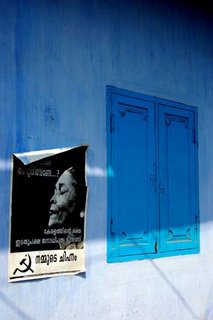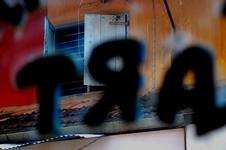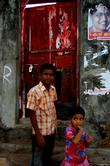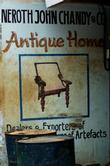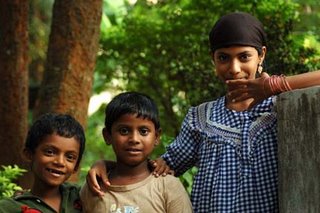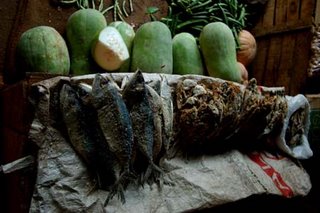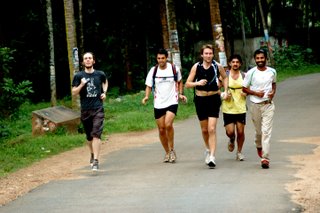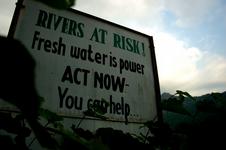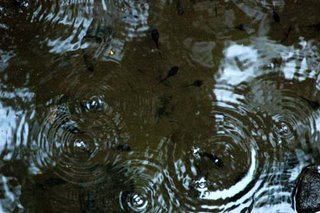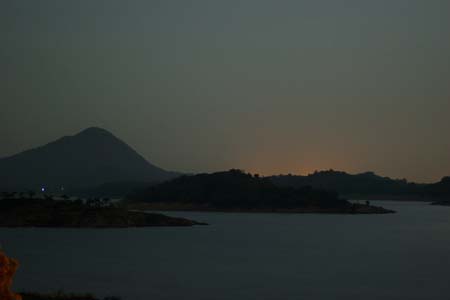
12th May 06
Kanjikode – Malampuzha Dam
12kms
Highlands and the Lowlands - Palakkad District
Moving south from Silent Valley we drove through the bustle of Palakkad town to the Government guesthouse in Malampuzha. There is a noticeable contrast between the highlands and lowlands of Palakkad town. The lowlands are thick with paddy fields, cashews (hidden in thick outer canopies), pepper and rubber trees. While the highlands look both ominous and resplendent, with high mountain peaks, tangled forests and deep ravines.
Life Soil
Running in the late afternoon sun I retold Dan and Rahul what I heard the night before. A man at a coconut stand had explained to me that soil is a key factor in the lives of people along the rural roads here. Folklore associates soil's connection to the characteristics of people who live from the land. Where the soil is ‘loose’ - the people take life at a more laid back pace; loose soil is said to develop an idle streak! Where the soil is hard and difficult, the people who cultivate it are dedicated, hard working and resilient – or so the story goes. Palakkad’s deep red soil is virtually solid. As we discussed the possibilities of the soil we ran on - we covered some 5kms in glorious oblivion.

As we turned from the precarious 'A' road to a tranquil 'B' road we came across T.V Lijo, a primary health worker. Lijo stood in front a prefab building marked 'Early Cancer Detection Centre'. We have seen hospitals in all the major cities, but this was the first rural clinic we had come across.
Kerala has the best health care systems in India, and has been compared to Cuba for its ability to provide quality health to all citizens, urban and rural.
Reaching Out
Lijo took time out to give me a tour of the facility, showing me an array of equipment and awareness leaflets (in Malaylam and English). There is a team of health professionals who reach out to surrounding villages with awareness campaigns on the symptoms of cancer. Mouth cancer is especially high in the area because chuna (lime) and tobacco – (ingredients of beetle-nut chewing) burn into the soft mouth tissue, potentially leading to cancer.
This four-room clinic assesses around 300 patients a month. I saw a web-cam and a large TV screen. Referrals go to Thrissur (60kms away) or even further, so the web-cam enables doctors in Thrissur to assess patients ‘remotely’. It struck me that in my own work history of developing primary health care facilities in rural regions in the Pacific and Africa, I had never seen such prudent technology.
As we said goodbye I looked back to see Lijo standing beside the clinic's huge satellite dish.
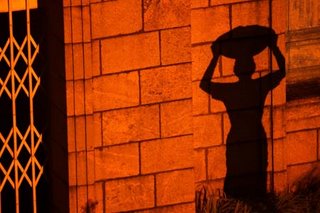
Riding Along
As we passed tidily irrigated paddy fields, three men, all squeezed onto a single seat 'Hero Honda' motorbike, waved us to stop. With a swirling hand gesture they asked why we were running. A fair question! We managed to explain ourselves in a mixture of Malalyam, Hindi and English, drawing laughs and confused looks.
In the distance we spotted Dez and Sudeep having chai (tea) under a Banyan tree at a small roadside hut. We joined them for a bit. The fast flowing conversation traversed through tales of a beautiful little girl who appeared - observed us for a minute - before disappearing back into the woods. She was a 'tribal' from the interior of the highlands – a local term used for people who live in the forests.

Real Dangers
As we trotted off we were advised that we should be careful of snakes on the road ahead. Two weeks ago a snake had bitten a 'planter' (rich farmer). The unfortunate man died, days later, in spasms of agony.
With kites and eagles circling overhead, and the three of us fighting for the middle point of the road (away from the verges), we climbed onto the small tourist haven of Malampuzha - home to the Rock Gardens and Malampuzha Dam. Running through the Saturday afternoon tourists, on the wall of the dam at sunset, was a perfect finish to a close to perfect run. Palakkad will hold a special place in our memories.
Pete
*For further discussion on subjects raised in this article please refer to the Development and Photography section of the Discussion Forum.

